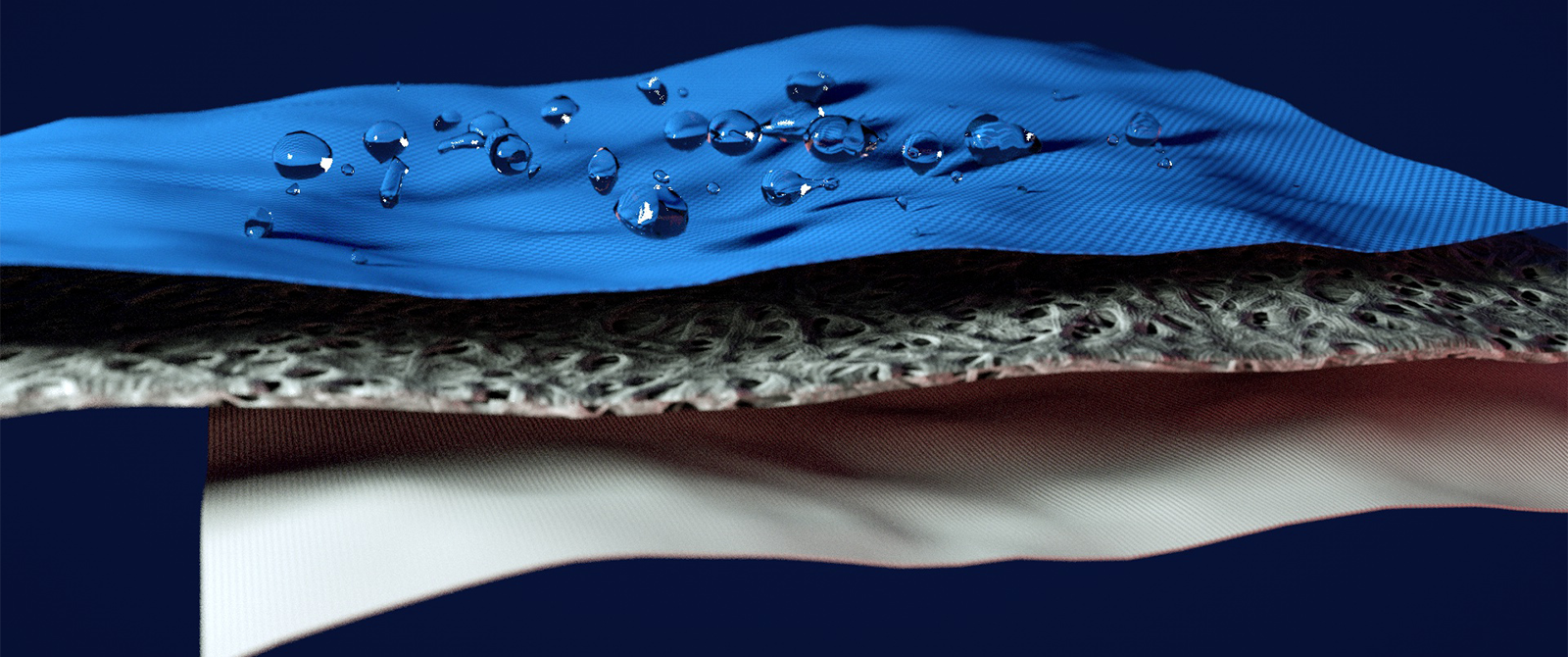As the saying goes, “there is no such thing as bad weather, only unsuitable clothing.” If you’ve had the misfortune of finding this out the hard way, then you know (now) the importance of finding gear that will stand up to the elements while providing the comfort you need to enjoy the outdoors.
Waterproof rating and breathability go hand-in-hand to tell you the level of protection your gear will provide and the level of comfort it’ll offer. In this blog, we will explore both topics in-depth and give you the knowledge you need to find the gear that’ll provide the protection and comfort you need to enjoy the outdoors regardless of what Mother Nature has in store.
Understanding waterproof fabric ratings
The waterproof rating is used to quantify the protection you can expect from a piece of gear. Depending on the activity you’re shopping for, the waterproof protection you need may vary. In most cases, this number will be an official standard or an industry-accepted metric that identifies the minimum amount of water that can pass through a jacket.
This section will help you understand waterproof ratings, how they are established, and what you need to know when purchasing waterproof apparel.
How is the waterproof rating determined?
Outdoor gear (and the fabrics used to make the gear) are often put through a series of tests to ensure it will hold up to the elements, water column being one of the most common tests. The waterproofness of a fabric is determined by the water column rating. This rating is established by measuring the amount of water pressure a fabric can withstand before water penetrates it. The higher the water column, the more water pressure the fabric can withstand, therefore determining its waterproof rating.
How is a water column measured?
It is commonly believed that for a garment to be considered waterproof, it must first be tested and reach a minimum water column of 10 meters (10,000 mm). There are two primary ways to measure the water column: static-column test and hydrostatic pressure test.
“The degree of waterproofness is measured with a hydrostatic pressure test that calculates the resistance of the fabric before the water passes through it. This test is performed using a tube that indicates the number of millimeters vertically. The fabric is placed at one end, while water is added to the tube and the pressure on the material increases. When water droplets appear on the surface of the fabric, it means the material has reached its limit of waterproofness. The number indicated in millimeters in the tube at that moment represents the water column” (Understanding the Water Column | NTK USA Camping Blog.)
What waterproof rating is the best?
The short answer is it depends. When purchasing waterproof apparel, there are numerous factors you should consider, including typical conditions, and your level and duration of activity. If you are planning to spend the day in the backcountry or shred through the mountains when snow is in the forecast, a higher waterproof rating will help you stay dry longer. Alternatively, if you are heading out for a short run or walk with your dog, a lower waterproof rating will generally suffice.
As you are evaluating waterproof ratings, it’s important to also consider the breathability rating to ensure the garment you’re selecting is suitable for the activities you pursue and conditions you encounter. Waterproof and breathability work in tandem to create functional gear with optimal performance, all while providing high levels of protection and comfort.
Understanding breathability ratings
What is breathability?
Breathability in outerwear is how easily moisture vapor or body heat can pass through the garment from the inside to the outside. As you’re skiing in the backcountry or cycling in frigid conditions, the last thing you want is to be soaked in your sweat, which leaves you uncomfortable and can increase the risk of hypothermia in cold weather. Breathability allows you to maintain comfort while pursuing outdoor activities at various intensities.
Waterproofness and breathability: How do they work together?
Waterproofness and breathability work together to keep you comfortable whether you’re skiing in the backcountry or hiking in a summer monsoon. The waterproof barrier keeps the weather at bay and protects you from the elements while breathability lets out any clammy build-up inside the garment, so you stay dry.
How to choose the right water column and breathability rating
Protection from the elements plays a vital role in your comfort and enjoyment of the outdoors. Buying outerwear with specifications to meet its intended use allows the user to stay outside longer without changing their plans due to the weather. When shopping for your next outerwear piece, you might consider the following guidelines to steer you in the right direction and help you find the gear that will keep you stay dry and comfortable.
|
Water Column (mm) |
Duration |
Weather Conditions |
|
0-10,000mm |
Short duration |
Light rain, light snow, light pressure |
|
10,000-20,000mm |
Moderate to prolonged duration |
Moderate rain, average snow, moderate to high pressure |
|
20,000-30,000mm |
Prolonged duration |
Heavy rain or snow, heavy pressure |
|
Breathability Rating (g/m²/24hrs) |
Usable conditions |
Ideal Activities |
|
10,000 |
Cooler weather conditions, stationary activities |
Snowsports, motorsports, fishing, hunting, lifestyle |
|
20,000 |
Aerobic activities, all weather conditions |
Backpacking, climbing, hunting, snowsports |
|
30,000 |
High-aerobic activities, warmer conditions |
Cycling, trail running, cross-country skiing |
Learn more about moisture vapor transfer rate and breathability ratings.
Water column and MVTR are two important components to consider when shopping for your next outerwear purchase. Understanding waterproof ratings, breathability, and how they work together will help you find the right piece of gear for your next adventure.
Are you interested in incorporating high waterproofness and performance in your next product launch? Contact us or fill out the form below.

